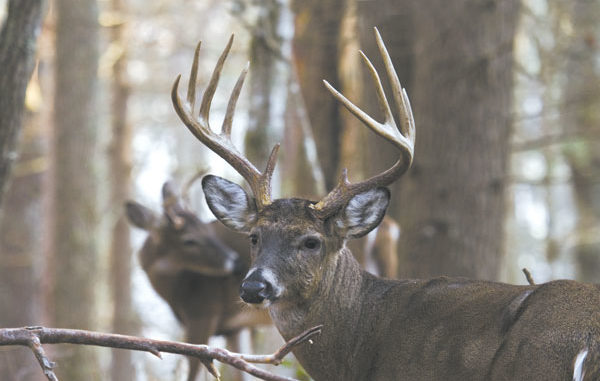
Where to go in North Carolina to find great deer, duck, bear and small-game hunting on public lands.
North Carolina has two million acres of public hunting lands on 89 game lands that dot the landscape from the ocean to the western border, a distance of approximately 500 miles.
Administered by the N.C. Wildlife Resources Commission, the state’s game lands have long played an important role in the conservation and propagation of diverse wildlife species, providing habitat for game and non-game animals, plants and streams.
With more people re-locating to North Carolina than any other state, public lands also fulfill an increasingly important role for sportsmen, who are discovering that finding a place to hunt on private land is becoming more difficult with each passing year.
Game lands are home to species, from squirrels to deer to wild turkeys to black bear to quail, songbirds and raptors. Some of the game lands, especially in the western part of the state, see little hunting pressure because they’re so far away from the major urban population centers of the Piedmont. Also in the west, the U.S. Forest Service and National Park Service own millions of acres of land, most of which are game lands managed by the Commission.
But game lands are scattered across North Carolina, and it’s a rare hunter who lives more than an hour from a public-hunting area.
Two major changes took place in the management of game lands this year. One is basically an administrative difference; instead of three regions, the state has been divided into East and West regions. The other change was brought about by wildfires in the east. Two major fires have consumed several thousand acres of two game lands this summer, and that will affect hunting this fall and winter.
Here’s our annual review of the state’s public hunting lands and what species sportsmen are likely to encounter:
EASTERN REGION
DEER
Best bets: Roanoke River Wetlands and National Wildlife Refuge, Jordan Lake, Butner-Falls of Neuse, R. Wayne Bailey-Caswell, Suggs Mill Pond, White Oak Plantation, Juniper Creek, Holly Shelter, Croatan National Forest, Shearon Harris, Van Swamp, Gull Rock, Chowan Swamp.
“We don’t have any new game lands in the east, although the East Region now contains 56 counties, with 61 game lands covering 900,000 acres,” said Tommy Hughes of New Bern, a supervising biologist for the Commission. “One main change will be for muzzleloader season at Roanoke River. Since we’ve been seeing a lot of muzzleloader hunting pressure at the Upper Roanoke Tracts, a crowding problem at the Garibaldi and Odom tracts, we decided to install a quota (permit) system to hunt the entire Roanoke River Game Land. We didn’t want there to be confusion about who had to apply or not, so we decided to make muzzleloading permits (required) at the entire refuge.”
The Jordan Lake Game Land annually reports the highest deer harvest of any game land on its 40,937 acres spread across Chatham, Durham, Orange and Wake counties.
Butner-Falls of the Neuse (40,899 acres, Durham/Granville/Wake counties) also has tremendous deer habitat and great hunting around the periphery of the lake of the same name.
“Either-sex changes will occur at Butner next year after the proposals go to public hearings (in Sept. 2010),” Hughes said.
The R. Wayne Bailey-Caswell Game Lands (17,778 acres scattered in 10 sections across Caswell County) has hardwood ridge/pine plantation/creek bottom/agricultural fields habitat that makes it a great spot for deer.
Hunting for deer, waterfowl and perhaps other species will be affected on the Suggs Mill Pond Game Land (10,760 acres, Bladen/Cumberland counties) by the Simmons Road wild fire that started in the Live Oak community on June 20 and burned 1,370 acres in three weeks. Most of the damage is on the northern third of the game lands, including around Jessups Pond, Big Galberry Bay and Marshy Bay, all north and east of Little Singletary Lake, the largest body of water on the game land.
“It’s burned primarily a lot of Carolina bays, pocosins, down there,” Hughes said. “It shouldn’t affect the deer population much, other than moving it around. They’ll go somewhere else on the game land, and it’ll cause bays that have been burned, which are typically poor deer habitat, to green up and improve for a while until they toughen up again.”
Whitehall Plantation Game Land (1,430 acres, Bladen County, just south of Bladen Lakes State Forest) also has plenty of good deer hunting, but it’s a permit-only area because of its small size. It’s located off NC 53 on either side of Whitehall Road northwest of Kelly.
“It’s mostly Cape Fear lowlands,” Hughes said, “floodplain forests, sloughs, and 40 percent of it is upland pines. Deer are doing well there.”
Juniper Creek Game Lands (18,624 acres, Brunswick/Columbus counties) is in the massive, triangle-shaped Green Swamp between Whiteville, Bolton, Clairmont and Bolton. It’s the state’s best game land for deer hunting with dogs.
“We’ve done a lot of work to improve the roads at Juniper Creek,” Hughes said, “a lot of grading. It’s more open than in the past.”
Holly Shelter Game Land is even larger (64,473 acres, Pender County) than Juniper Creek and, like Suggs Mill Pond, experienced a large wild fire caused by a June 19 lightning strike. Still burning well into July, the “Juniper Road” fire had consumed 31,000 acres.
“Most of the areas burned are pocosin habitat, peat bottoms,” said Hughes, who predicted that the region will “green up” after rains put out the fires. He said the main damage will come to roads across the peat bottoms that will be totally consumed.
“The good news is a lot of the east side of the game land hasn’t been affected, including long-leaf pine ridges,” Hughes said. “But we’ve lost a lot of organic roads; they’ve been burned in half or had huge holes burned in them.”
The Croatan National Forest, another large game land (160,724 acres, Carteret/Craven/Jones counties), fortunately didn’t have a wild fire this summer.
“It’s wide open for deer,” Hughes said. “No permits are needed except on the Bear Garden Tract.”
Shearon Harris is a 13,727-acre upper piedmont game land surrounding the Progress Energy Lake of the same name that offers good deer hunting.
BEAR
Best game-land bets: Buckridge, Alligator River, Dare Bombing Range, Gull Rock, Croatan, Holly Shelter, Bladen Lakes State Forest, Juniper Creek, Lantern Acres.
Bear hunting should be outstanding again in eastern North Carolina, but most bruin-chasers will loose their dogs or still-hunt on private land.
Still, some public-land hunts offer good opportunities to take bear. Hyde County features three game lands — Buckridge, Gull Rock and New Lake — and each has healthy numbers of bruins. Hyde led the state in 2010 game-land bear kills with 164.
“Buckridge is open to dog hunting,” Hughes said, “as is Alligator River (National Wildlife refuge).”
Another game land with plenty of black bears — but permit-only hunting — is the Dare Game Land Bombing Range. The U.S. Air Force opens chosen sections of the 45,149-acre property for a pair of 2-day still and 2-day dog hunts. Still hunts are Nov. 15-16 and December 13-14, while dog hunts are Nov. 18-19 and Dec. 16-17. The still hunts will allow 20 total hunters, while the dog hunts allow two parties of 10 hunters (20 total hunters) for each hunt date. Visit www.ncwildlife.org to apply ($5 to apply) or go to a wildlife cooperator agent. Application deadlines are Oct. 1.
“We’ll have a new (bear) hunt at Gull Rock for one disabled hunter,” said Hughes, who explained that the Commission will place a disabled hunter and companion in a mobile Huntmaster blind on Nov. 14-15. This also is a permit hunt with an application deadline of Oct. 1.
“Croatan, Holly Shelter and Bladen Lakes State Forest also (had) a lot of bears killed last year,” Hughes said. “Also at Juniper Creek, a portion of the game land is bear sanctuary, but the rest of it can be hunted. Lantern Acres also has good numbers of bears.”
Permits are needed to hunt at the Bear Garden Tract at Holly Shelter but not other places at that game land. However, the June-July wild fire may have damaged road access at Bear Garden and sections may be closed to vehicles while repairs are underway.
WATERFOWL
Best game-land bets: Goose Creek, J. Morgan Futch, Currituck, White Oak River, Roanoke River Wetlands/NWR, Jordan Lake, Butner-Falls of Neuse.
Because of its location, Goose Creek Game Land (10,027 acres, Beaufort/Pamlico counties) probably is the top public-lands waterfowl-hunting spot in the state. Goose Creek contains six waterfowl impoundments near the mouth of the Pamlico River, including Pamlico Point (on Beard Island, which sits in Pamlico Sound), Campbell’s Creek, Smith Creek, Spring Creek, Hunting Creek and Hobuken.
“Goose Creek has good numbers of teal, wigeon, gadwall, the occasional mallard, black ducks and other species,” Hughes said. At the outside impoundments (Pamlico Point), you will see divers, scaup, bufflehead and ruddy ducks. A lot of (tundra) swans are killed there, but inside impoundment hunting can be excellent.”
Before Oct. 1, waterfowl may be taken without permits at Goose Creek posted impoundments on Tuesdays and Saturdays and opening and closing days of waterfowl season. Beginning on the first open waterfowl season day in October through season’s end, waterfowl hunting is permit-only at impoundments.
The second-best game land for waterfowl probably is the 600-acre J. Morgan Futch Game Lands property in Tyrrell County. Intensively managed for waterfowl by the Commission and Ducks Unlimited, this game land contains 14 side-by-side impoundments. It is permit-only and has early- and late-season waterfowl hunts. Deadlines to apply are Sept. 1 (early-season hunts) and Oct. 1 (late-season hunts). Hunters will be assigned impoundments to keep them from crowding at favorite spots.
“It has ringnecks, teal, wood ducks, mallard, wigeon and pintails,” Hughes said.
Perhaps the best open-water game-lands permit hunt is at Currituck Banks Game Land and Currituck National Wildlife Refuge. Featuring permit-only hunts, Currituck Banks shows four blinds on either side of Currituck Sound while the refuge has nine blinds.
North River Game Land (19,939 acres, Camden/Currituck counties) “has fluctuating numbers of waterfowl, and that keeps hunter numbers low,” Hughes said. “If you go up there and hit it right, though, you can have a good day.”
The White Oak River Game Land, at the headwaters of the river northwest of Swansboro, only has 2,303 acres but features puddle ducks, wigeon and gadwall. No permit is needed “and you’ll usually be hunting by yourself,” Hughes said. “It can be good hunting at times.”
Suggs Mill Pond Game Land has Singletary Lake, Horseshoe Lake and Jessups Pond, plus several impoundments. The summer wildfire burned extensively around Jessups Pond and could affect waterfowl hunting there, but the rest of the water bodies at the lake should be fine. Permits are required to hunt the game land. “Suggs Mill Pond has real good wood duck and ringneck duck hunting and occasional pintails and teal, plus some mallards and black duck.”
The Roanoke River Wetlands/NWR (permit-only hunting) also is a good waterfowl area, “but (hunting success) depends upon the river’s water level and how much rain there is in the swamps,” Hughes said. “The impoundments up there hold a lot of birds, wigeon and pintails, while the swamps have woodies and mallards, some Canada geese, too.”
A small boat is needed to access some of the regions in the Upper Roanoke, such as the Devereaux Tract. Lower Roanoke tracts and impoundments are accessible by walking or wading.
Jordan Lake Game Lands has seven green-tree impoundments, but usually only five are open each year. The lake receives heavy pressure, so many hunters use kayaks to get back into flooded areas for jump shooting of woodies and mallards; permits aren’t needed to hunt lake ducks. Butner-Falls Game Lands also has green-tree and planted impoundments. No permits are needed to hunt impoundments until Nov. 1, but after Nov. 1, permits are needed at these impoundments.
Shearon Harris Game Lands has ringnecks and diving ducks. Permanent blinds are not allowed at Harris, nor any other Piedmont game lands. Shooting hours remain the same at Butner-Falls and Jordan, 30 minutes before sunrise to sunset.
Hyco and Mayo Game Lands in Person County attracts diving ducks, while beaver ponds at feeder creeks support mostly wood ducks.
SMALL GAME
Best game-land bets: Roanoke River Wetlands/NWR, Jordan Lake, Butner-Falls, Caswell, Holly Shelter, Suggs Mill Pond, Croatan NF, Stones Creek, Gull Rock, White Oak River, Bladen Lakes SF, Chowan Swamp.
Roanoke River Wetlands/NWR has many cutovers and early-successional habitat that hold rabbits, plus, its bottomland hardwoods make excellent squirrel habitat.
Jordan Lake, Butner-Falls of Neuse and Caswell game lands have almost identical habitat, with hardwood ridges around the lakes supplying plenty of mast for squirrels. Butner-Falls of Neuse, with fields planted specifically for cover, offers great rabbit hunting, especially off Brickhouse Road.
Dove fields at Jordan and Butner-Falls should have decent amounts of milo, millet, sunflower, wheat and corn this fall, but Hughes said the summer drought in the southeast, particular at game lands from Little Washington south, meant little production of food “so dove hunting may be tough this year at southeastern game-lands fields. Roanoke River also has dove fields that got rain and should be productive.”
Lantern Acres has early successional habitat, so rabbit hunters should find some action there.
“There are portions around Croatan (Game Land) where you can rabbit hunt, primarily after deer season,” Hughes said.
Whitehall Plantation, along the Cape Fear River drainage, has good bottomland habitat (oaks, poplars) for squirrels.
“Holly Shelter, along the Northeast Cape Fear River, Croatan and Chowan Swamp game lands, places with hardwood bottoms, should have fairly decent squirrel hunting,” Hughes said.
Dove hunters should visit www.ncwildlife.org to see updates on game-lands dove fields. Look under Hunting/Game Lands Maps/Related Information/Game Lands Dove Fields.
Quail hunting remains limited. There are a few coveys at Caswell and Gull Rock game lands.
WESTERN REGION
DEER
Best bets: Uwharrie National Forest, Green River, South Mountains, Buffalo Cove, Thurmond-Chatham, Sandhills.
Uwharrie Game Lands (50,189 acres, Davidson/Montgomery, Randolph counties) is national-forest land is located mostly east of the Yadkin River and Badin Lake, separated into 24 sections, some covering thousands of acres and others as small as 50 acres. Uwharrie receives a lot of hunting pressure but is so large that hunters rarely feel crowded.
Biologist Gordon Warburton of Marion, who supervises game lands in the western half of North Carolina, has more and better deer habitat to administer this year after having the south-central region added to his plate, and the Uwarrie is the main course.
“Uwharrie is one of the classic areas for public deer hunting,” he said.
Uwharrie is in the Central Deer Section and has two 1-week either-sex seasons in mid November and late December.
The Sandhills Game Land (61,225 acres, Hoke/Moore/Richmond, Scotland counties) is even larger than Uwharrie and is spaced at 42 sections, some large and some tiny. Hunting is allowed three days per week, and its season mirror Eastern Deer Section dates, but no deer-dog hunting is allowed. It has a special permit-only Nov. 12-Dec. 10 either-sex season for 100 hunters (each day). This hunt has an Oct. 1 application deadline.
“We’ve done a lot of habitat work, burning and thinning, to create early successional growth for deer at Green River, South Mountains, Buffalo Cove and Thurmond-Chatham, and that helps all wildlife species,” Warburton said. “The national forests (Pisgah, Nantahala) don’t do as much of that, but we’re conducting talks with them and environmentalists to try to arrange some management practices that will benefit both game and non-game animals.”
BEAR
Best bets: Pisgah National Forest, Nantahala National Forest, Mount Mitchell and Daniel Boone bear sanctuaries, Pond Mountain, Cold Mountain, Needmore, South Mountains, Johns River, Buffalo Cove, Mitchell River, Dupont State Forest.
“Black bear still are increasing in numbers in the mountains,” Warburton said. “U.S. Forest Service lands are a good place to go.”
At almost one million acres, Pisgah and Nantahala comprise half of North Carolina’s public-hunting lands, and bears range across most of that territory. Hunting with dogs is allowed almost everywhere on western North Carolina public lands, except for the nine bear sanctuaries where no bear hunting is allowed.
The Mount Mitchell Bear Sanctuary dog hunts are permit-only, starting Oct. 17 and ending Dec. 31. A maximum of 20 hunters will be allowed (two 10-party hunts) each day, with hunts separated into three-day segments (for example, Oct. 17-19, Oct 20-22, etc.). Application deadline is Sept. 1. The Daniel Boone Bear Sanctuary dog hunts follow the same dates and permit process.
A new game land, Pond Mountain in Ashe County, also contains some bears and allows limited permit hunts.
“Up around Linville Gorge near Grandfather (Mountain) is good bear-hunting territory, too,” Warburton said. “Good bear hunting extends down through Graham, Macon and Swain counties. We’re also trying to increase the harvest in the Pisgah Ranger District. All the forest service lands are big enough for good bear-dog hunting.”
SMALL GAME
Best bets: Uwharrie National Forest, Sandhills, South Mountains, Johns River, Sandy Mush, Pisgah, Nantahala, Perkins, Cold Mountain.
Dove hunting may provide the best public-lands small-game hunting in the western zone, as Sandy Mush Game Land (Buncombe/Madison counties) requires a permit only for the first four open days of the season at its five dove fields. Perkins Game Land (Davie County/no permit) has six fields, while Johns River Game Land (Burke County/no permit) has one 18-acre field. South Mountains Game Land (Burke/Cleveland/McDowell, Rutherford counties/no permit) has 30 acres of dove fields while the Sandhills (no permit) has 13 dove fields — but no dove hunting is allowed at the field-trial area from the third Sunday in September. Uwharrie (no permit) has five dove fields and Second Creek Game Lands (Rowan County) allows permit-only dove hunting.
South Mountains also has “a few” quail, Warburton said, but “we’re still working to bring up quail numbers at our CURE area there. People also see some quail at Sandy Mush. The Sandhills probably has the best quail population.”
Quail hunting isn’t permitted at the Sandhills CURE area.
“The Sandhills has fox squirrels and may be the only game land in the state with them,” Warburton said, “and I think there’s going to be a study soon, possibly about restricting fox squirrel-hunting somehow down there.”
Hunters can take one fox squirrel a day.
Sandhills GL also has decent rabbit hunting, but hunters must take care to not hunt at CURE areas.
Uwharrie probably has the best gray squirrel hunting in the western region, with its rolling hardwood ridges. Uwharrie rabbits also provide some opportunities for beagle owners.
Grouse hunting is difficult at most western game lands because these birds prefer early-successional growth that’s only possible through timber thinning and controlled burns — mostly disallowed in national forests.
“We had a small bump in grouse populations last year, but the previous few years, numbers have been down,” Warburton said. “Habitat is the key to having grouse.”
Warburton suggests that sportsmen write or email the U.S. Forest Service requesting a policy change to allow its properties in the western half of the state to be better managed for wildlife and hunting. He said the feds pay attention to such requests when holding hearings to decide on timber-management policies.
WATERFOWL
Best bets: Johns River, Needmore, Sandy Mush.
Waterfowl hunting at game lands is fairly restricted in the west to properties with streams or rivers flowing through them or areas with good beaver populations.
“Waterfowl here isn’t even as widespread as in the piedmont,” Warburton said. “Johns River is a place though that has waterfowl, mostly wood ducks, mallards and the occasional black duck. Every once in a while, you’ll also see a teal.”
Warburton said hunters engaging in float trips from boats have the best success.
“Guys floating the Little Tennessee (River) at the Needmore Game Land (4,525 acres, Macon/Swain counties) will see a good variety of ducks.”
Beaver ponds, especially on small streams that feed the region’s larger rivers, offer some hunting opportunities as well.
“There are beaver ponds with waterfowl on forest service lands in the Grandfather Ranger District and places near Robbinsville,” Warburton said.
Other than that, most activity is restricted to float trips at the Catawba River and French Broad, plus some waterfowl will be found during New River float trips.

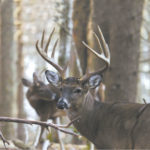
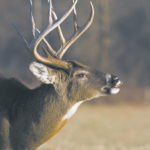
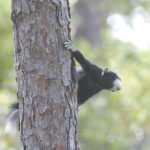
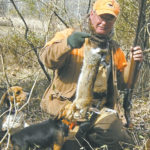
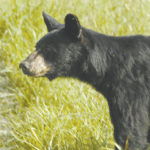
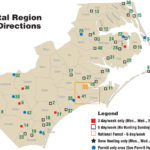
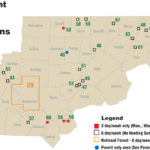
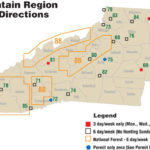



Be the first to comment